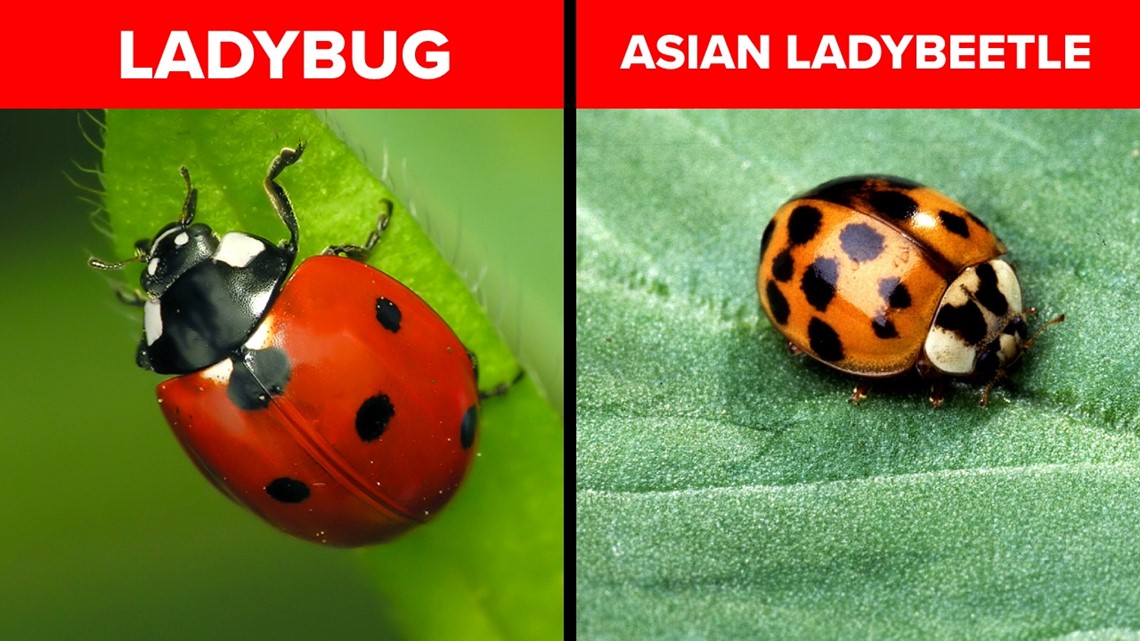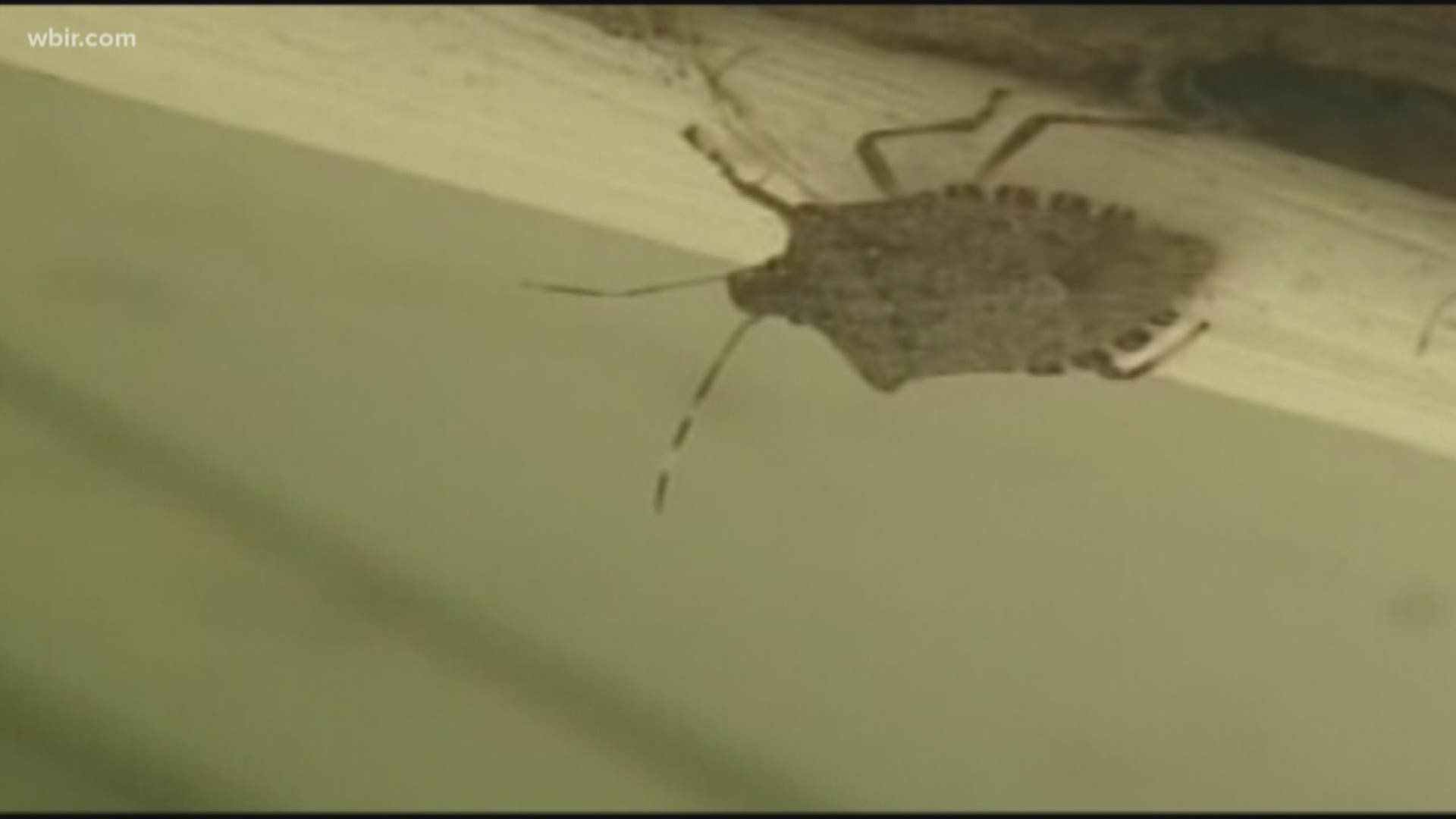KNOXVILLE, Tenn. — Spotting lots of ladybugs coming out of cracks and holes in your home as the autumn chill settles in? These are not the seven-spotted ones that Tennessee adores.
The beetles haunting your home are likely the seven-spotted ladybug's cousin: the Asian lady beetle, also known as the harlequin ladybird or "Halloween beetle" because of its annual autumn appearance.
Seven-spotted ladybugs and Asian lady beetles are now among the most common among the hundreds of lady beetle species across North America. Both have red, orange and black color variants and have spots on their backs, but the two are a little different -- the biggest being the Asian lady beetle is more likely to swarm into homes during autumn and winter.
See if you can spot the differences below:


The big giveaway visually between the two is around their "neck." If you look closely, the Asian lady beetle has a different marking that looks more like a black "M" or a butterfly. Asian lady beetles are also larger than ladybugs and also tend to have more spots.
Typically, Asian lady beetles infest homes when the weather begins to cool down in the fall -- much like stinkbugs. And when they do, they usually come in swarms -- huddling in corners and inside window screens, coming out of cracks in ceiling fixtures and the like.
The reason, according to University of Kentucky entomologists, is that Asian lady beetles seem to be attracted to illuminated surfaces with a light-dark surface contrast, so homes that are partially illuminated by the sun are attractive to them.
"Once the beetles alight on buildings, they seek out crevices and protected places to spend the winter. They often congregate in attics, wall cavities, and other protected locations," UK entomologists said. "Since lady beetles are attracted to light, they are often seen around windows and light fixtures."
The beetles go dormant during the winter and then reawaken in the spring. If they spent the winter hiding inside your home, it's not uncommon to see the beetles emerging in spring from ceiling fixtures or around windows on a warm day. If you've ever found dead lady beetles inside lighting fixtures when doing spring cleaning, they may have been trying to escape outdoors but got attracted to the light.
So what should you do to get rid of them? They're mostly a minor nuisance, but if you spot some in your home: treat them like stinkbugs and avoid crushing them. The reason is that lady beetles emit a smelly fluid when crushed, and that fluid can stain surfaces.
The best way to get rid of them is simply to vacuum them up and then seal off the holes and cracks they're coming in from.
While the Asian lady beetle is an invasive species, they're not necessarily bad. After all, the red seven-spotted ladybug people adore is also an invasive species from Europe. Both species can bite and will emit foul fluids when threatened, but rarely do unless you pick them up or aggravate them.
Much like their native lady beetle cousins, these insects are good for gardens and orchards because they eat aphids and other pests. In fact, these two species in particular are some of the best at getting rid of aphids. However, their existence also makes it harder for other types of native lady beetles to populate the area because they are more efficient predators and outcompete them for food sources.
The arrival of both the seven-spotted ladybug and Asian lady beetle in the U.S. was mostly intentional, but their rapid spread across North America was not. According to University of Kentucky entomologists, the U.S. Department of Agriculture would intentionally release these beetles in several states lacking native lady beetle species between the 1960s and 1990s to deal with agricultural pests eating away at pecan and apple trees. Both of these beetle species eventually migrated to states where they weren't introduced, and in a few cases have been able to outcompete some native North American lady beetle species.
Fun fact: the seven-spotted ladybug is one of two insects to be named a Tennessee state symbol, with the other insect being the firefly.

